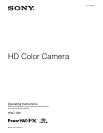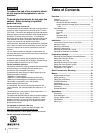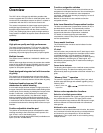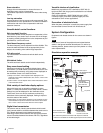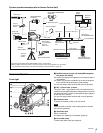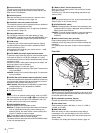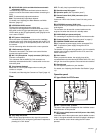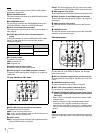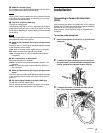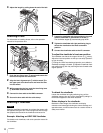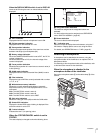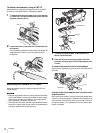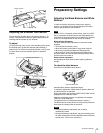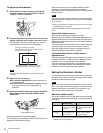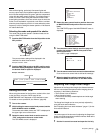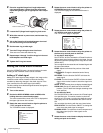
4
Overview
Knee saturation
Change of hue and decrease in chroma that occur in
highlighted areas can be compensated.
This enables reproduction of natural skin tones under strong
lighting.
Low key saturation
Hue and chroma in low-key zones can be compensated. Thus,
compensation for color reproduction in all zones is enabled in
combination with matrix color compensation and knee
saturation functions.
Versatile detail control functions
Skin-tone detail function
This function allows control (emphasis or suppression) of the
detail level for just a certain hue or chroma area in the image,
by creating a detail gate signal from color components of your
specified hue, such as skin tones.
Detail boost-frequency control
The boost frequency can be adjusted from 20 to 30 MHz. This
allows the detail thickness to be set appropriately for the
subject, thus enabling more subtle image expression.
H/V ratio control
The ratio between horizontal and vertical detail can be
adjusted.
White/black limiter
The white and black details can be limited independently.
Easy menu-based setting
Selections and settings for viewfinder display items, safety-
zone marker
1)
or center marker,
2)
screen size marker, etc. can
be made quickly and easily, using setup menus displayed on
the viewfinder screen or an external monitor.
1) Safety zone marker: A box-shaped marker displayed on the
viewfinder screen which indicates 80%, 90%, 92.5%, or 95% of the
total screen area
2) Center marker: A cross-shaped marker which indicates the center
of the viewfinder screen
Wide variety of viewfinder display options
Along with items such as operation messages, a zebra
pattern,
1)
a safety-zone marker, and a center marker, camera
settings may also be displayed on the viewfinder screen.
Furthermore, there are various cautionary and warning
indications to be occasionally displayed, making it simple to
check the status of the camera.
1) Zebra pattern: A stripe pattern displayed on the viewfinder screen
which indicates the portions where the video level is above about
70% or 100%. Used to check the video level of the subject.
Digital triax transmission
The camera uses an industry standard dual-shield coaxial
(triax) camera cable for connection between the camera and a
CCU. Newly developed original digital transmission
technology is built into the camera, and high-quality pictures
can be transmitted between the camera and CCU, regardless
of the cable length.
Versatile choices of viewfinders
Multiformat monochrome CRT viewfinders, HDVF-200 (2-
type) and HDVF-550 (5-type) can be selected for use in studio
and portable systems.
Color LCD viewfinders, HDVF-C35W (3.5-type), HDVF-
C730W (6.3-type), and HDVF-C950W (9-type), are also
selectable to cover various applications.
Prevention of electrical shock
When the power connection is unsafe, the power supply from
the connected Camera Control Unit will be shut off.
System Configuration
Peripherals and related devices for the camera are shown in
figures.
Production of some of the peripherals and related devices
shown in the figures has been discontinued. For advice on
choosing devices, please contact your Sony dealer or a Sony
sales representative.
Standalone operation example
Note
Zoom Lens
(for ENG/EFP)
“Memory Stick”
VCT-U14
Tripod Adaptor
Tripod for
portable
camera
RCP-700/900-series
Remote Control Panel
CCA-5 cable
HDVF-200/C35W Viewfinder
CAC-12
Microphone
holder
Microphone
HXC-100
RM-B750/B150
Remote Control Unit
AC adaptor
AN-DN10/DN2B
BC-L70/L160
AC power
Video output
HD-SDI/SD-SDI/VBS
1)
(selectable)
1) No subcarrier phase-lock function with respect to external
reference is available for the VBS signal output from the camera.



